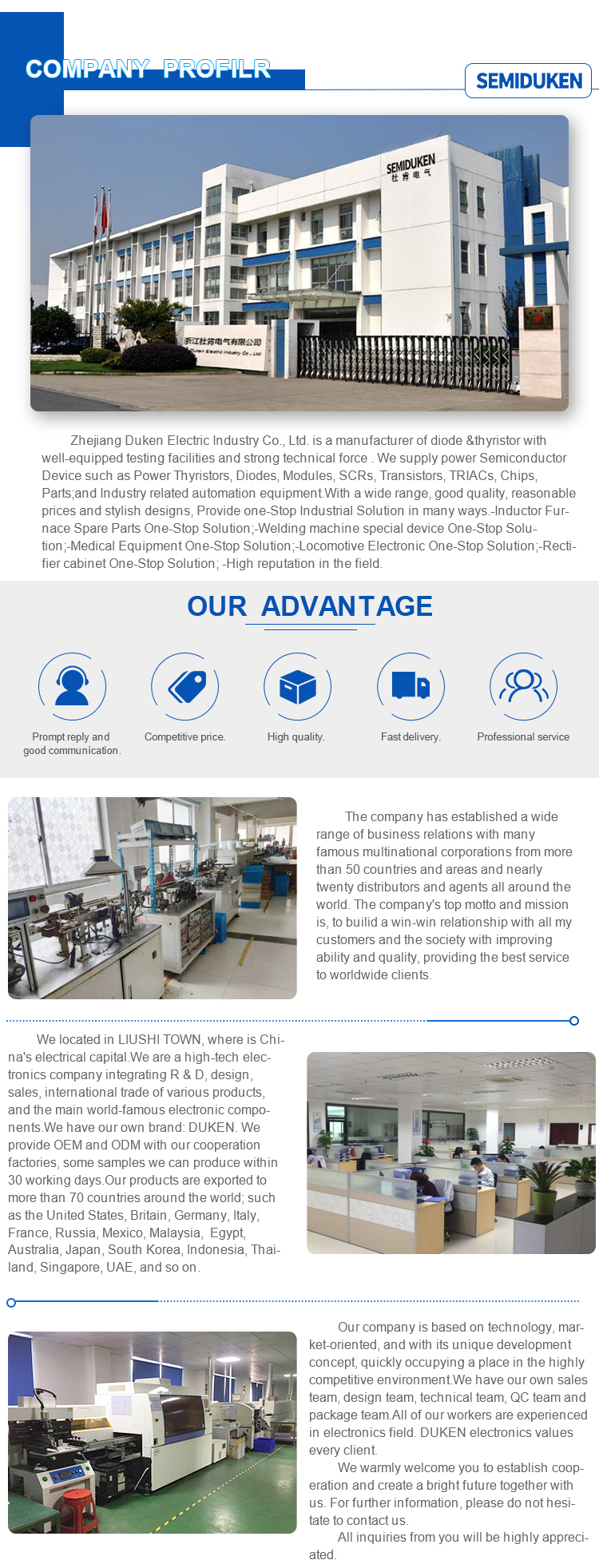Thyristor Modules for Industrial Soft-Start and Charger Applications
1. The Need for Soft-Start in Industrial Machinery
Industrial equipment such as motors, compressors, and textile machines often face high inrush currents at startup. A soft-start mechanism helps to gradually ramp up voltage, reducing mechanical stress and preventing circuit overloads. Thyristor modules are the key to implementing effective soft-start control due to their High surge current capacity and stable performance in fluctuating load environments.
2. Enhancing Battery Chargers with Thyristor Technology
Modern battery charger systems demand precise voltage regulation and thermal stability. The low on‑state voltage characteristic of thyristor modules reduces power losses and heat generation, ensuring efficient and safe battery charging. Additionally, dual thyristor configurations support bidirectional control, which is useful in regenerative charging or load balancing systems.
3. Applications in Textile and Automation
In textile machinery, smooth control over motor speeds is critical to prevent fabric damage and reduce machine wear. Industrial phase control enabled by thyristor modules allows seamless adjustments in operational speed and torque. These systems benefit further from dual thyristor module designs that enhance reliability during long production runs.
4. Durability Through Compact Engineering
Today’s engineering demands compact, high-performance components. Thyristor modules in a compact package make integration easier, especially in retrofits or limited-space control panels. These modules are ideal for distributed control in multiple applications—ranging from small-scale soft-start systems to large, centralized battery charger installations.
5. Integrated Efficiency and Energy Savings
The combination of low on‑state voltage, High surge current, and intelligent industrial phase control delivers substantial efficiency gains. In both charging systems and textile operations, energy savings directly translate into reduced operational costs, aligning with green manufacturing goals.
READ MORE:
- Compact and Ceramic-Based Thyristor Modules in UPS Applications
- The Power of 500A and 250A Thyristor Modules in UPS Design
- How Thyristor Modules Enhance UPS Systems for Critical Applications
- Scalable Power Solutions Using Thyristor Module Technology
- Versatile Applications of Thyristor Modules in Smart Industry
- Thyristor Technology Elevates Efficiency in HVAC and Elevator Systems
- How Thyristor Modules Power Compact and High-Performance Systems
- Engineering Thyristor Module Performance for UPS Systems

